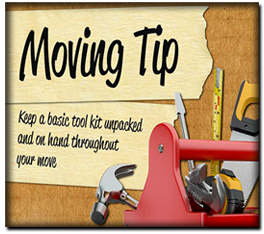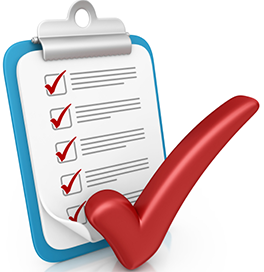- Get moving quotes.
It is best to start looking for dependable local moving services in your area well before moving day. Express Moving Service can provide you with a 100% Guaranteed Free Moving Quote before you move. This will give you enough time to obtain the necessary boxes and supplies before you move. - Decide whether you will pack yourself.
Professional moving services like Express Moving FL offer packing services, if you prefer to have some or all of it done for you. Your agent will answer any questions you may have about packing services. - When do you need your boxes to arrive?
Will your belongings go door to door, or do you need to park them in storage temporarily before taking receipt of them? Ask one of our Professional Moving Experts about delivery options. - Is your company paying for the move?
Before finalizing your moving contract, be sure to refer to your company’s moving policy to determine any limitations on reimbursable services. For example, they may cover moving but not packing services.

+ Weekly Moving Planner

8 Weeks: Get Your Moving Quotes & Determine Your Moving Needs
7 Weeks: Selecting and Hiring a Moving Company
- Simplify your moving process.
Your move coordinator is available to answer your questions and provide moving tips; be sure to keep his or her name and number handy throughout your move. - Commit to a moving service.
Sign your estimate and book your service after careful review. Still have questions? Ask your move coordinator. Express Moving FL is here to help you every step of the way. - Lock in your moving date.
It may be hard to believe, but moving dates go fast around here, so if your date is available, be sure to pin it down while you can. When booking your move, it’s a good idea to re-confirm your date and moving plan for safety.
6 Weeks: Notify Utility Companies and All Service Providers
- Establish your mail forwarding.
You can easily complete a Change of Address form online at the United States Postal Service website. You can choose the start date of mail forwarding in advance, so this is easy to get out of the way early on.
- Review your personal accounts.
Go through your personal accounts, including banks, insurance providers, credit cards, magazine subscriptions, alumni networks, professional organizations and other entities that should be informed of your change of address.
- Contact utilities companies.
Set a date to disconnect your utilities. If possible, arrange to have them shut off the day after moving day.
- Reach out to your personal network.
Notify friends and family of your new address via email or snail mail.
- Notify your professional services contacts.
Notify doctors, lawyers, accountants and any business associates who need to be made aware of your move. You may wish to request copies of medical or legal records before moving. Speak with your insurance providers to be sure you have adequate coverage during your move.
5 Weeks: Clear the Clutter ─ throw away, sell or donate what you can
- Get organized.
Start going through room by room to determine what is worthy of making the move with you. What would be easier to just get rid of? - Start sorting.
For everything you don’t plan on keeping, you can generally sort it into three categories: - Trash (little or no value)
- Donation or Garage sale (for used items with generally lower value)
- Re-sale (for new, like-new and higher value items that you may not want to donate)
- Items to be tossed.
For trash, explore recycling options, particularly for older electronic items such as non-working computers, old cell phones, old eyeglass frames…even ink cartridges and batteries. Some of these items can be recycled for cash. Be sure you appropriately dispose of any hazardous materials or electronics. - Items to be donated.
For donation, choose your favorite charity to support. An easy option is bulk bagging everything to drop off at your local Goodwill. If you choose to donate to a charity, don’t forget to get a receipt to demonstrate the value of your donations for tax deduction purposes. - Items to be sold.
If you are going to have a garage sale, you can combine the lower value and higher value items you may not want to hang on to. If your selection seems a bit sparse, consider asking neighbors if any of them would like to pitch in for a combined garage sale that might be more attractive to potential buyers.
If you don’t want to bother with a garage sale, you can post your items for sale online or go through re-sale boutiques. This is best for new, like-new and higher value items.
4 Weeks: Confirmations
- Check for any change of plans.
Has there been a change in the items you plan on moving? A change in dates? Be sure to update your moving agent.
- Check in with your agent or move coordinator.
Reconfirm that your agent has your destination address and the phone numbers where you can be reached.
- Review the origination-to-destination plan.
Will there be any additional stops to pick up or deliver goods to a location other than the main pickup and delivery points? If so, confirm that this is reflected on your personal moving planner.
- If driving, plan your trip.
Will you be driving? Be sure to have your car properly serviced before the trip. You don’t want a fan belt to break in the middle of nowhere.
3 Weeks: Prepare friends, family and belongings
- Make travel plans.
Make family travel plans (if you haven’t already). Verify hotel room and airline ticket reservations. If you’re traveling with a pet, be sure your accommodations allow for four-legged friends.
- Plan for your trip and first night in your new home.
Think about which items your family will want to have with them during your move and on your first night in your new home. Make sure to set these items aside so they don’t end up packed at the bottom of the moving van where you can’t get to them.
- Begin packing.
Are you packing yourself? Now is a good time to start packing some of your family’s less frequently-used items such as books and out of season clothes. You will appreciate having a head start on packing as your moving date nears.
- Prepare fabrics.
Clean rugs and draperies. Leave them wrapped when they come back from the cleaners; this will keep them clean until they reach your new home.
- What not to do.
Do not clean upholstered furniture before moving. The moisture from cleaning could leave furniture vulnerable to mold during periods of storage.
2 Weeks: Plan for pets and overlooked items
- Coordinate your pet’s move.
Reconfirm travel plans for pets. Will you need to board them or leave them with friends?
- Take your pet to the vet.
Take your pets to their veterinarian to be sure you have all required health certificates and inoculations required for your destination state.
- Don’t forget to pick up items from servicers.
Pick up anything you’ve had cleaned, repaired, altered or serviced.
- Retrieve locker items.
Empty lockers at places such as the club, gym, dance studios, sports training facilities or bowling alleys.
- Empty safe deposit boxes.
Do you have wall safes or hidden places for valuables throughout your house? Don’t leave thousands of dollars worth of valuables in a wall for the next occupant to find.
- Return borrowed items.
Be sure to return library books, schoolbooks and anything you may have borrowed from friends or neighbors.
- Connect with your move coordinator.
Reconfirm all details with your move coordinator.
1 Week To Go: Last minute details
- Check in with your move coordinator.
If you have any questions, reach out to your move coordinator. Go through your moving plan with him or her to confirm accuracy of all details.
- Finalize packing.
If you are doing your own packing, be sure that everything is ready to go before moving day.
+ Packing Tips

The better you pack, the easier it is to unpack.
Getting started
- Start by packing the things you aren’t using and won’t need until after you move. (Think camping equipment, sporting equipment and out-of-season items). Work backwards from least to most needed so that your everyday necessities won’t need to be packed until moving day.
- Your soft and lightweight goods in drawers need not be removed and packed in boxes; they can be moved as they are. Your movers will wrap dressers with plastic and blankets to keep drawers closed. However, anything breakable, spill-able or that may damage other items should be removed from your drawers prior to moving.
Tips for packing items in boxes
- Group like items together. Pack kitchenware together in one box and label it accordingly. Do not mix fragile collectibles with pots and pans, or otherwise throw together contents haphazardly.
- Wrap items individually with multiple layers of clean packing materials like news wrap, paper towels, tissue paper and/or bubble wrap. Towels, blankets and other soft items may also be used to pad boxes.
- Each box should be packed firmly but not overloaded. You don’t want items to shift. The box lid should close easily without bending inward or being over-packed.
- Each box should be tightly sealed with tape. Boxes with high value items need to be left open for inspection by the van operator prior to transport.
How to pack a standard box
- Before adding items to your empty box, create a two to three inch layer of padding at the bottom with crushed news wrap.
- Place the heaviest items on the bottom of the box, then build up in layers with medium weight items in the middle and lightest weight items on top.
- Each layer should be filled with crumpled news wrap or other packing materials to eliminate empty spaces.
- You may further define layers by using sheets of cardboard for dividers.
- Everything should be completely covered by paper or other padding.
How to pack small, fragile items in a box
- Small and fragile items should be individually wrapped. The more delicate the item, the more padding required.
- They can then be packed separately in small boxes, either one item per box, or a few together in each box.
- Ensure these boxes are fully cushioned with paper or other packing materials.
- These smaller boxes can then be placed in a larger box, with each small box cushioned by additional news wrap to fill the gaps between boxes.
Organizing and marking boxes
- As you seal each box, list its contents on the side in permanent marker. You can also keep track of your boxes and contents in a notebook. You may also wish to number each box for better tracking.
- Which room should the box be directed to? If you mark each box clearly by room, you can tape signs on each room at your new home, which will help the movers quickly distribute the boxes to their appropriate rooms.
- Which boxes will you want to unpack first at your new home? Indicate these priority boxes with a special mark so they can be set aside when you get there. Your United team should have “Last Load” stickers for you to use.
Packing electrical equipment and items with multiple pieces
- Group parts and pairs together. Put hardware in plastic bags and tape them securely to the articles with which they belong.
- Wind and fasten electrical cords so they are not left dangling.
+ Last Minute Moving Checklist

Make Sure to Cover All the Last Minute Details
Last minute details
- Make sure that all mechanical and electrical equipment is properly serviced for shipping prior to the arrival of the moving truck. As always, reach out to your move coordinator with any questions.
- Be on hand when the service representative arrives to prepare your appliances for shipment.
Day before moving day
- Identify any extra-fragile items needing special attention. If certain items should not be packed or moved, mark them appropriately.
- Label any items or boxes you will want first when the truck arrives at your new home (valuables, electronics, etc.).
- If you are doing your own packing, make sure everything is ready to go before moving day. Upon arrival, the van operator will check to see if boxes have been properly packed.
- If Express Moving FL is helping you pack, collect things you definitely want packed together, such as children’s toys and place in separate groups.
- Unplug all electronic appliances 24 hours in advance of a move, except plasma televisions, so that they will be at room temperature on moving day. This includes home computers, stereos and audio/video equipment.
Moving day
- Make it a point to be on hand to see that all of your goods are loaded; remain close by until loading is complete. After making a final tour of the house, check and sign the inventory list. Be sure to get your copy from the van operator and keep it safe.
- Check in with your move coordinator and ask any remaining questions about your moving services.
- Give the driver the exact destination address.
- Be sure to let the driver know how you can best be reached, pending the arrival of your belongings.
Take a last look around
- Water shut off?
- Furnace and air conditioner shut off?
- Light switches turned off?
- All utilities arranged for disconnection with service providers?
- Windows shut and locked?
- Old house keys and garage door openers surrendered?
- Have you left anything?
Delivery day
- Be on hand to accept delivery. If you cannot be there personally, be sure to authorize an adult to be your representative to accept delivery and pay the moving charges for you.
- Check your household goods as they are unloaded. If you notice any damage or that something is missing, personally report any it to your salesperson or move coordinator. If there is any change in the condition of your property from what is noted on the inventory list, note discrepancies on the driver’s copy of the inventory. By signing the inventory, you are acknowledging receipt of all items listed.
- When unloading, each piece of furniture will be placed as you direct, including placing of rugs and setting up any beds that were disassembled at origin. If you would like your mattresses unpacked or appliances installed, check with your salesperson or move coordinator beforehand. They can help you arrange for this additional moving service.
- It always helps to have a guide. Place a floor plan of your new home by the entrance, so the movers can determine where each piece of furniture should go.
- Keep all your moving documents in a safe place. You will need them for verification of moving expenses when you file your federal income tax returns.
- To prevent any possible damage, leave appliances and electronics turned off for about 24 hours while they adjust to new room temperatures.
Settling in after your move
- It is time to make it official! Check in with your new post office for any mail being held and ask for delivery to begin.
- Check state (and local) requirements for auto registration and a driver’s license.
- You may want to select an attorney to discuss laws that pertain to your destination state, county and/or city. Be sure to cover such matters as wills, transfers of property and investments, insurance regulations, inheritance laws, taxes, etc. Most laws affect a family as soon as residence is established in the new state and city.
